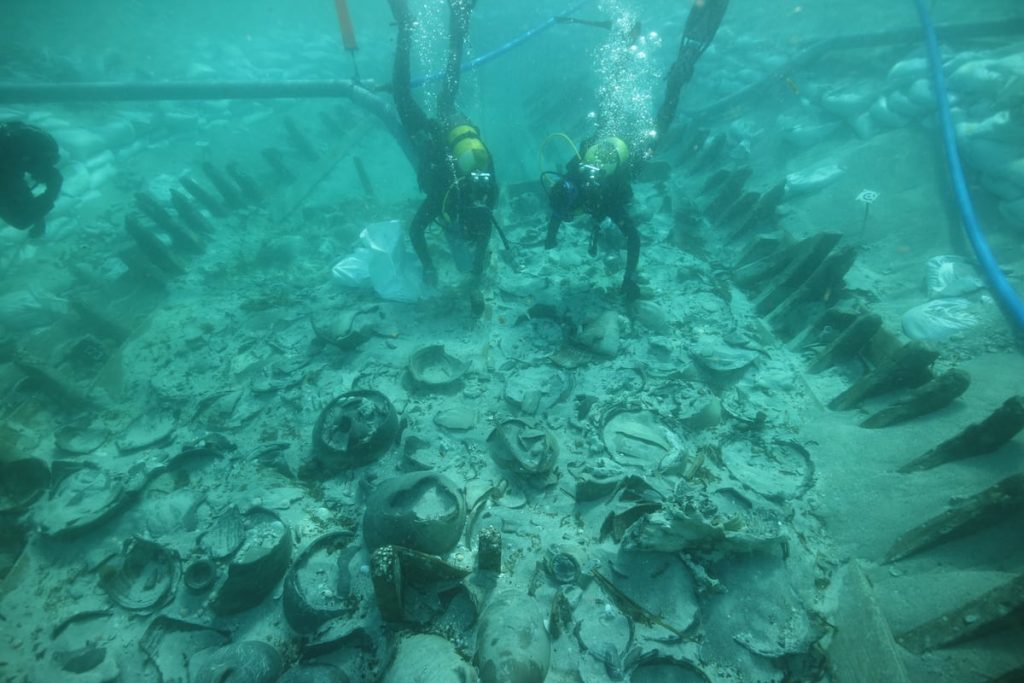A commercial ship set sail from the port of Cartagena in 320 A.D. with a cargo of hundreds of amphorae filled with oil, wine, and fish sauces. With about four crew members on board, it sailed the calm waters of the Mediterranean towards an unknown port, possibly in current-day Italy, Corsica, or one of the Balearic Islands. At some point, the ship reached the bay of Palma, south of the island of Mallorca, and ended up wrecking and sinking to a depth of two and a half meters, only 65 meters from the coast. It remained buried in the sand underwater for centuries until it was discovered in May 2019 by a local resident who swam regularly in what is now one of the most touristy beaches on the island, Playa de Palma.
The history of this ship is now known thanks to the work of archaeologists and technicians from the Council of Mallorca, the University of the Balearic Islands, the University of Barcelona, and the University of Cádiz, who have been conducting the Arqueomallornauta project to recover the sunken ship’s cargo. In a first intervention, archaeologists found the entire cargo intact, leading to a second phase where they excavated the entire cargo while leaving only the hull at the bottom. They discovered amphorae from the Cartagena region containing oil, fish sauces, and wine, confirming their origin. The recovery included 300 complete amphorae with over a hundred inscriptions, making it a rare and significant find.
In addition to the cargo, the excavation also revealed materials associated with the ship’s crew, such as shoes, a Roman lamp, hooks, and well-preserved ropes, providing insights into the people aboard the ship. A ritual coin found in the ship’s keel helped date the vessel to around 320 A.D. during the transition from Roman pagan to Christian society in the Baleares. The excellent state of preservation of the wood and the various organic materials used to transport the cargo, like vine branches, demonstrate the ingenuity of ancient navigators. The peculiarity of this shipwreck allows researchers to glimpse a snapshot of the past at the moment of the sinking.
The excavation has concluded, and plans are now in place for the ship’s recovery, scheduled for later this year. Engineers from Ports of the Balearic Islands are designing a plan to float the ship, and a replica may be created to test the extraction process. Challenges posed by the shallow depth and proximity to the coast, coupled with the influence of waves on the operation, necessitate the involvement of various authorities in the extraction process. Once the ship is recovered and desalinated over an 18 to 24-month period, the Council of Mallorca intends to exhibit the findings for the public to appreciate this remarkable archaeological discovery. The potential exhibition of this incredible and significant piece of history promises to be an enriching experience for all.















